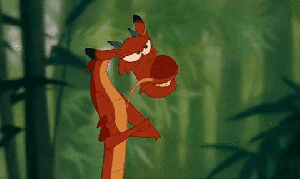Orange Beach, Alabama
 Sunday I finished Mark Kurlansky’s The Eastern Stars, reading pages 159-222 (Chapters 9 through 13). The book grew on me. In the last 75 pages or so, Kurlansky explains the state of Dominican baseball from about the 1980s to the late 2000s. Gone are the (seemingly) more-innocent days of the past. By book’s end, no one in the Dominican Republic pretends that baseball is anything but a big business and everyone wants a piece of the gold rush.
Sunday I finished Mark Kurlansky’s The Eastern Stars, reading pages 159-222 (Chapters 9 through 13). The book grew on me. In the last 75 pages or so, Kurlansky explains the state of Dominican baseball from about the 1980s to the late 2000s. Gone are the (seemingly) more-innocent days of the past. By book’s end, no one in the Dominican Republic pretends that baseball is anything but a big business and everyone wants a piece of the gold rush.
In a telling scene, Kurlansky tracks down Rico Carty – one of the first Dominican Major League stars –
“…And he had the Rico Carty Foundation, which was located in a beat-up downtown building. Inside the dank and dark offices, no phones were ringing and no one was working. They were playing dominoes – a tough-looking group of men. The furniture was flimsy and the doors were blackened from fingerprints. … One of the domino players, a burly, overweight black man with a shaved head and enormous hands, was Rico Carty.
Carty explained that the Rico Carty Foundation needed money.
What does the foundation do?
“Helps poor people,” he explained. “Gives them medicine, things like that.”
He wanted to be paid $500 to be interviewed. “It’s not for me,” he protested without prodding. “It’s for the foundation.”
He was offered more than $500 worth of medicine, but he insisted on cash and looked sad and disappointed when he realized that he wasn’t going to get it. “I’ve given a hundred interviews,” he said in a cranky tone, “and what do I have to show for it?” (p. 218).
Kurlansky Wanders Far Afield – And the Reader Enjoys the Ride
One nice surprise is how well Kurlansky does at describing the Dominican Republic. I thought that the first section that I read (pages 1-159), was often dry, unengaging history. But Sunday’s reading was much better. Kurlansky details the decline of the fishing industry in San Pedro de Macoris. Also, he goes into some fun digressions on Dominican music, nightlife, and cuisine. In the “food” material, he even includes locals’ recipes for their favorite dishes, such as salt fish. This material is loosely connected to baseball, but Kurlansky makes it work.
Baseball fans won’t be disappointed, as Kurlansky always brings the story back to the game. He does a good job of covering Sammy Sosa’s triumphs and travails. The reader learns that the Dominicans are just as ambivalent about Sosa as are Americans. Even better, The Eastern Stars discusses the changes in Dominican winter league ball, since so many major league teams discourage their stars from participating in it. Indeed, Chapter 11 (pages 185-191) is a terrific (if short) discussion of pro baseball in the D.R.

Dominican pro teams have cheerleaders. This woman cheers for Leones del Escondido (Lions of the Chosen One from Santo Domingo). I’d guess the cheerleaders do nothing to hurt attendance.
The Final Score – Some Runs & Hits, with a Few Errors
If I can be forgiven a flourish, I’d say that The Eastern Stars is a bit like a kaleidoscope – everywhere you look, there’s something interesting. But you have to make sense of the whole for yourself.
I’d give The Eastern Stars 7 out of 10.
At the end of the book, Kurlansky pulls off a late rally that raises my assessment of The Eastern Stars. He couldn’t completely overcome the negatives in the first 159 pages of the book, but I still recommend it to fans. When I leave today, I will donate my copy to the community bookshelf @ the condo so that the next ball fan who comes along can read it.





